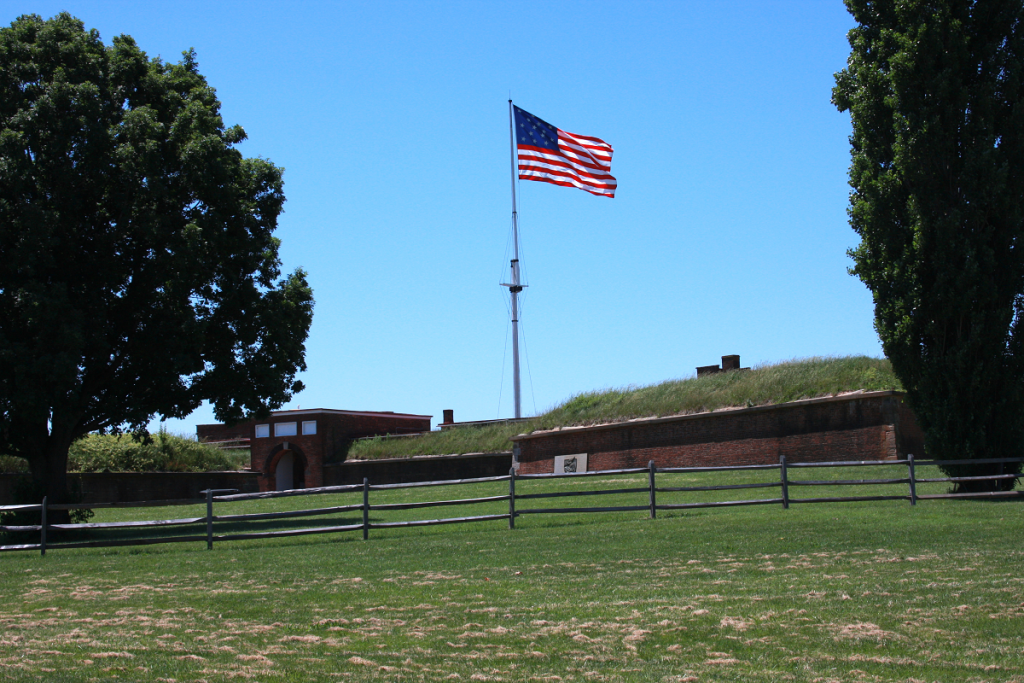June 5, 2022 @ 11:30 EDT
Site Visit #38
Fort McHenry National Monument and Historic Shrine got high marks from me before I even left the Visitor’s Center.
The site of a 25-hour bombardment by the British fleet during the War of 1812, it is best remembered as the inspiration for Francis Scott Key to write the Star-Spangled Banner. As a witness to the event from aboard a ship amongst the British fleet, when the bombardment finally ended, he strained to see through the mist, rain, and smoke whether the fort survived or was captured. When he saw the 15-star, 15-stripe American flag, he was moved to write the now-famous words..”Oh say can you see…”.
But back to the Visitor’s Center. There are several displays discussing the War of 1812: its causes, battles, and results, along with several on Francis Scott Key: why he was on those British ships, what was his background, and so on. And as so many Visitor’s Centers have, there is a movie. There isn’t really a theater for it. Rather, some benches and chairs are placed in front of a large screen in a corner of the building. The movie explains the war events leading up to the bombardment using drawings and some live-action reenactors.
The movie ends with a view of Fort McHenry with the flag flying above it, while the Star-Spangled Banner is played. Suddenly, the large screen is rolled up revealing a picture window the size of the screen, and looking out the picture window is the exact view of the fort that had ended the movie. It’s hard to describe but was very moving to experience.

Following that, I headed out to the fort itself. The Park Service has obtained several acres of land around the fort and along the waterfront, making it like a city park. People come here to simply lay on the grass, or sit and read. Access to the park area is free, though there is a cost to enter the fort. The inside of the fort is not all that big, as the outside areas were used as parade grounds. Having visited several forts during my November trip up the southeastern Atlantic coast, Fort McHenry offered much of the same. Many of the interior buildings were open and had interpretive posters explaining the building’s use.
The fort was constructed in the early 1800s as part of the massive fort-building exercise to protect the Atlantic coast. Though its moment of fame came in 1814, the fort was used for decades after, with upgrades and changes as the times demanded. It was used through the Civil War, and even through World War I, though for that latter war, it served as a hospital, not a defensive fortification.
I was lucky to visit on a gorgeous day – clear blue sky, mild temperatures in the upper 70s, a steady breeze off the bay which helped keep the flag flapping! This isn’t a park that will take hours to visit, though if you have the time, strolling down to the waterfront or just stretching out on a bench could be a relaxing way to extend your visit.
Steve